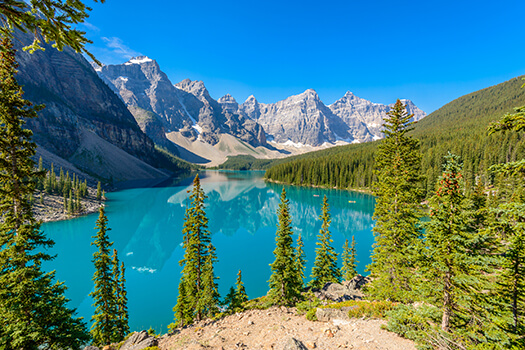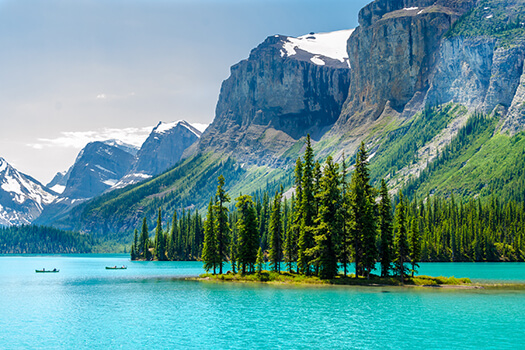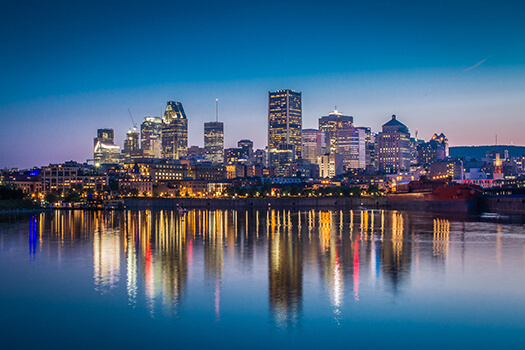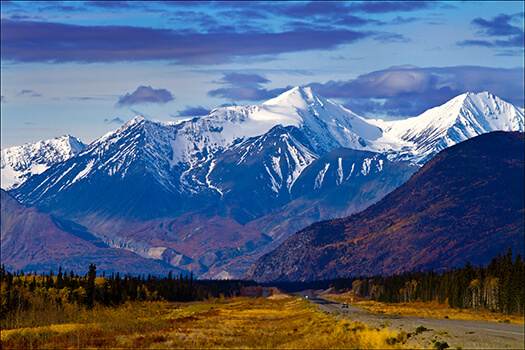About Canada
Canada, the second-largest country in the world, spans from the Atlantic Ocean in the east to the Pacific in the west, and northward into the Arctic. With a land area of nearly 10 million square kilometers, this vast nation is known for its diverse landscapes, multicultural cities, and deep-rooted history.
The currency used in Canada is the Canadian Dollar (CAD), and tipping is customary in most service sectors. Generally, tips range from 15% to 20% of the total bill in restaurants, cafes, and for services such as haircuts or taxis. Credit and debit cards are widely accepted, though it’s always a good idea to carry some cash for smaller businesses or rural areas. Canada has excellent internet infrastructure in most urban centers, with reliable Wi-Fi available in hotels, cafes, and public spaces.
Canada’s healthcare system is publicly funded, but visitors should ensure they have travel insurance, as medical costs can be expensive for non-residents. The country is known for its safety, but as with any travel destination, it’s wise to stay aware of your surroundings, especially in unfamiliar areas.
Canada Facts:
Loading Facts...
Weather varies significantly depending on the region and season. The best time to visit depends on what you're seeking: summer months from June to September offer warm weather and outdoor activities, while winter, from December to February, brings snow and is ideal for winter sports.
Culture & History
Canada is a multicultural country, home to a mosaic of cultures that reflect its history of Indigenous peoples, French and British colonization, and later waves of immigrants from around the world. The influence of Indigenous peoples is seen throughout the country, particularly in art, ceremonies, and language. French and British settlers left lasting legacies, most notably in Québec’s French language and architecture, and English’s predominance in most other regions.
In 1867, Canada became a self-governing dominion within the British Empire, which eventually led to full sovereignty in 1982. Today, it is a constitutional monarchy with Queen Elizabeth II (now represented by a Governor General) still recognized as the symbolic head of state.
Canadian culture is as varied as its landscape. You’ll find influences from Europe, Asia, the Caribbean, and more, all of which have shaped the cuisine, art, and daily life across the provinces. Festivals, from cultural celebrations like the Calgary Stampede to globally renowned events such as the Toronto International Film Festival, showcase the diversity and talent found within the country.
Top Reasons to Visit Canada
One of the most compelling reasons to visit Canada is its stunning natural beauty. Majestic mountain ranges, sprawling forests, glacial lakes, and rugged coastlines offer unparalleled opportunities for outdoor activities. Whether you’re exploring the iconic Rocky Mountains or witnessing the northern lights in the Yukon, the landscapes will leave you breathless.

The Aurora Borealis on display at night.
Canada’s cities offer a blend of modernity and historical charm. Whether it's Vancouver's ocean-meets-mountain setting, Toronto's arts scene, or Québec City’s old-world European charm, visitors can enjoy world-class dining, entertainment, and culture.
Another key reason to visit Canada is its national parks. From Banff National Park and Jasper National Park in Alberta to Gros Morne National Park in Newfoundland, these protected areas showcase the country’s diverse ecosystems and provide sanctuary for wildlife such as bears, moose, and beavers.
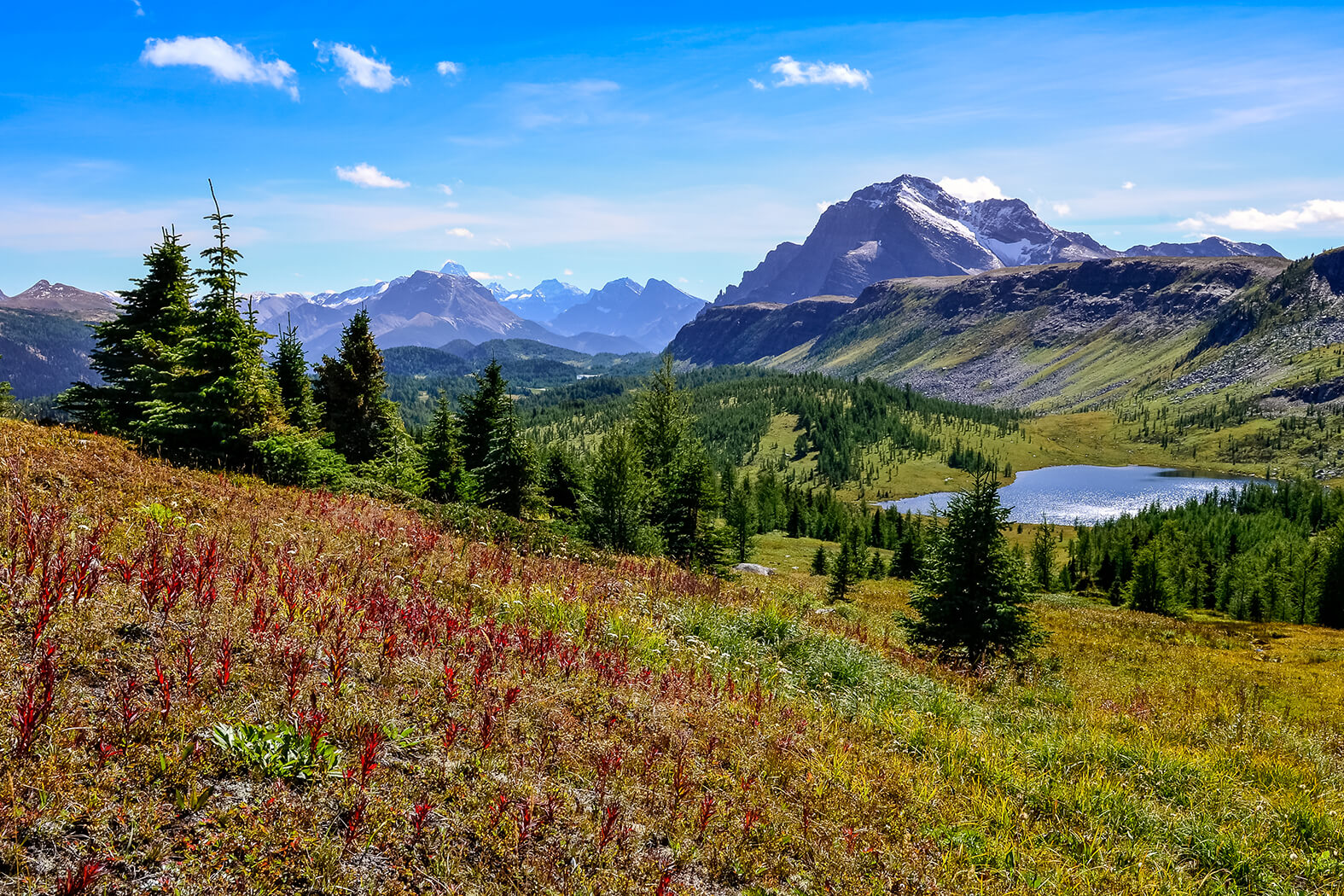
A view of Banff National Park near Egypt Lake in Alberta.
Travel Tips & Regulations
Traveling to Canada is straightforward for most tourists. Visitors from many countries, including the United States and much of Europe, do not need a visa for short stays, but you will need an Electronic Travel Authorization (eTA) if you’re flying in. It's recommended to check the Canadian government’s official website before departure to ensure you have the right documentation.
When packing, it’s important to consider Canada’s varied climate. Even in summer, certain regions, particularly mountainous areas, can experience cool temperatures, so layering is key. If you’re visiting in winter, bring insulated clothing, especially if you plan to enjoy outdoor activities like skiing or snowboarding.
Public transportation in Canadian cities is generally reliable, and car rentals are widely available for those looking to explore more remote regions. English is spoken throughout the country, with French being the primary language in Québec. Having a basic understanding of French can enhance your experience in predominantly French-speaking regions.
Major Regions & Provinces
Canada is divided into ten provinces and three territories, each offering a unique experience for visitors.
British Columbia, the western province is famous for its natural beauty, with coastal rainforests, rugged mountains, and the Pacific Ocean. Vancouver, the largest city in BC, is a gateway to outdoor adventures, including hiking, skiing, and whale watching. Vancouver Island, home to the capital city Victoria, offers a slower pace of life with historic architecture and access to lush wilderness.
Alberta is known for its dramatic landscapes, particularly the Canadian Rockies. Banff and Jasper National Parks are world-renowned for their hiking trails, ski resorts, and wildlife viewing. Calgary and Edmonton, the province's major cities, host notable festivals, including the Calgary Stampede.
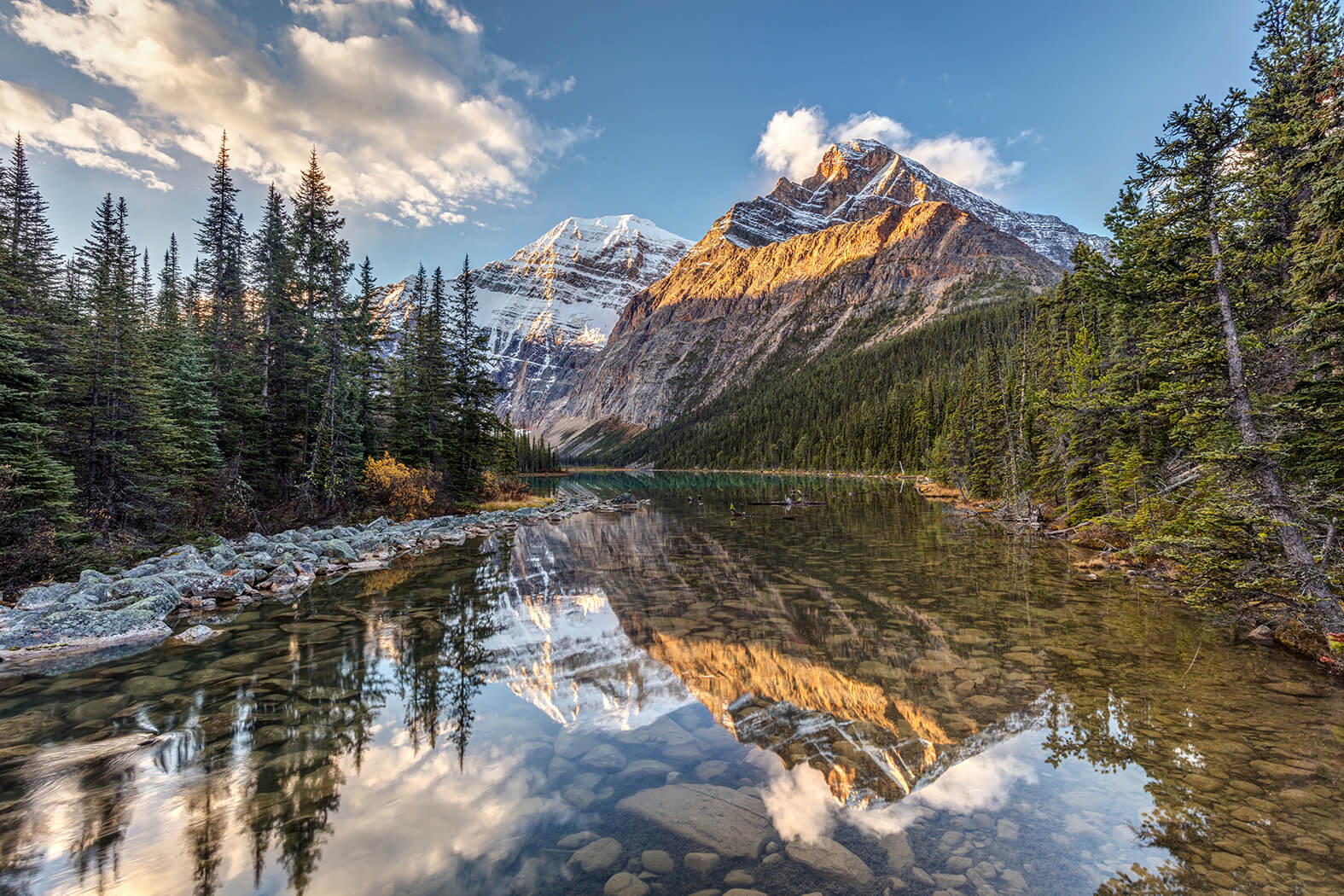
Mount Edith Cavell in Jasper National Park, Alberta.
Ontario is the most populous province, Ontario is home to Canada’s largest city, Toronto, and the nation’s capital, Ottawa. Toronto is known for its skyscrapers, cultural diversity, and thriving arts scene. Niagara Falls, located on the border with the United States, is one of the most visited natural attractions in the world.
Québec is the heart of French-speaking Canada. Montreal is known for its historic neighborhoods, arts and music scenes, and a fusion of European and North American influences. Québec City, one of the oldest cities in North America, is renowned for its cobblestone streets and well-preserved colonial architecture.
On the Atlantic coast, Nova Scotia is a maritime province where visitors can enjoy fresh seafood, coastal drives, and historic towns. Halifax, the provincial capital, offers a lively waterfront, while the Cabot Trail on Cape Breton Island is one of the most scenic drives in the world.
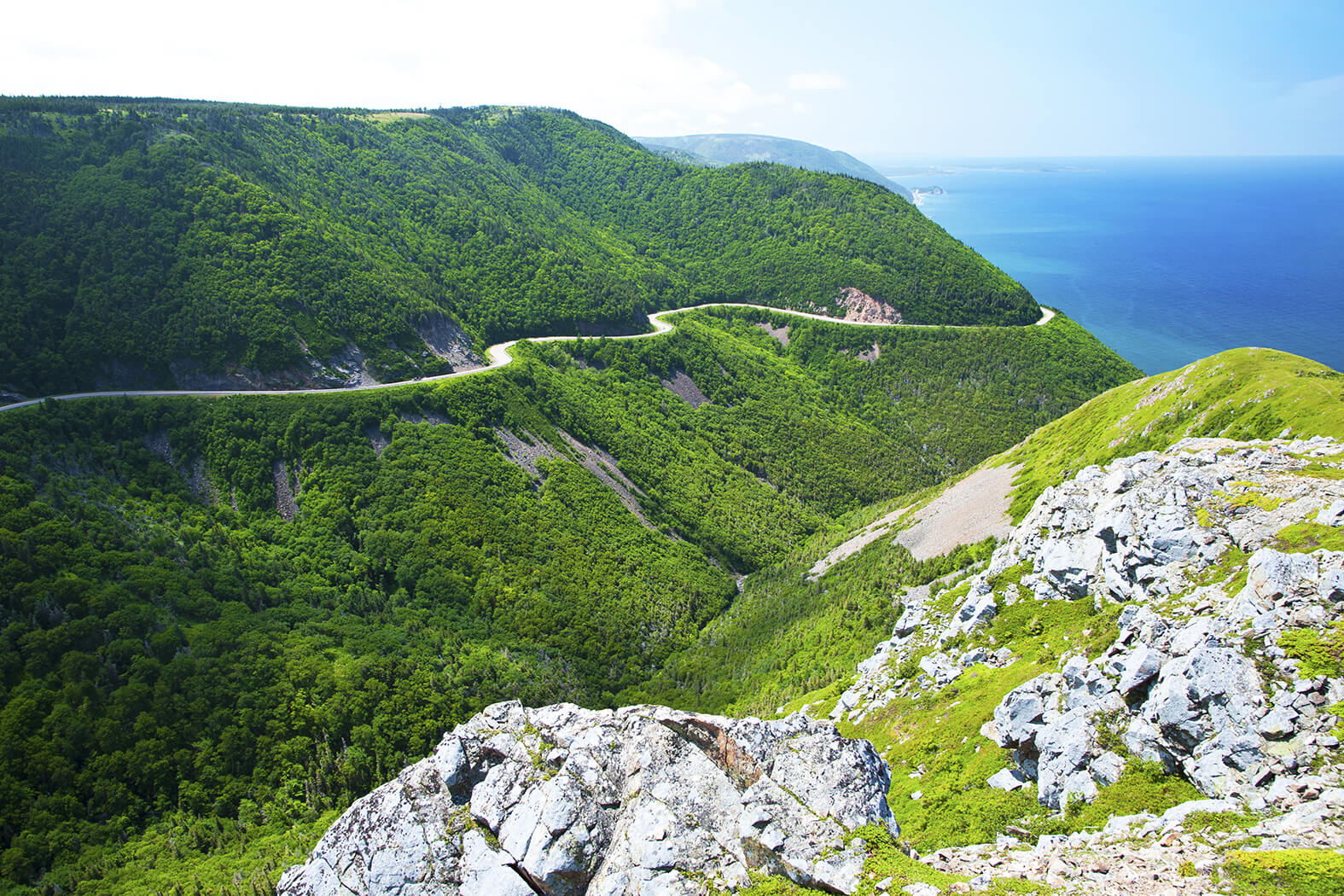
Cabot Trail in Cape Breton Highlands National Park, Nova Scotia.
Newfoundland & Labrador, the easternmost province is known for its rugged coastlines and maritime culture. St John's, the capital, is a colorful city with a strong Irish influence. Gros Morne National Park offers some of the country’s most striking geological formations.
Manitoba and Saskatchewan, known for their vast prairies, these central provinces are perfect for road trips and experiencing Canada’s heartland. Winnipeg, the capital of Manitoba, is home to the Canadian Museum for Human Rights, while Saskatoon in Saskatchewan offers access to the northern wilderness.
The Territories (Yukon, Northwest Territories, Nunavut), for adventurers looking to experience Canada’s Arctic regions, the territories offer untouched landscapes, Indigenous culture, and opportunities to see the northern lights.
Major Cities
Nestled between the ocean and mountains, Vancouver is one of Canada’s most scenic cities. It offers a thriving food scene, proximity to world-class skiing in Whistler, and easy access to nature. Stanley Park, a massive urban park, is perfect for biking or strolling along the seawall.
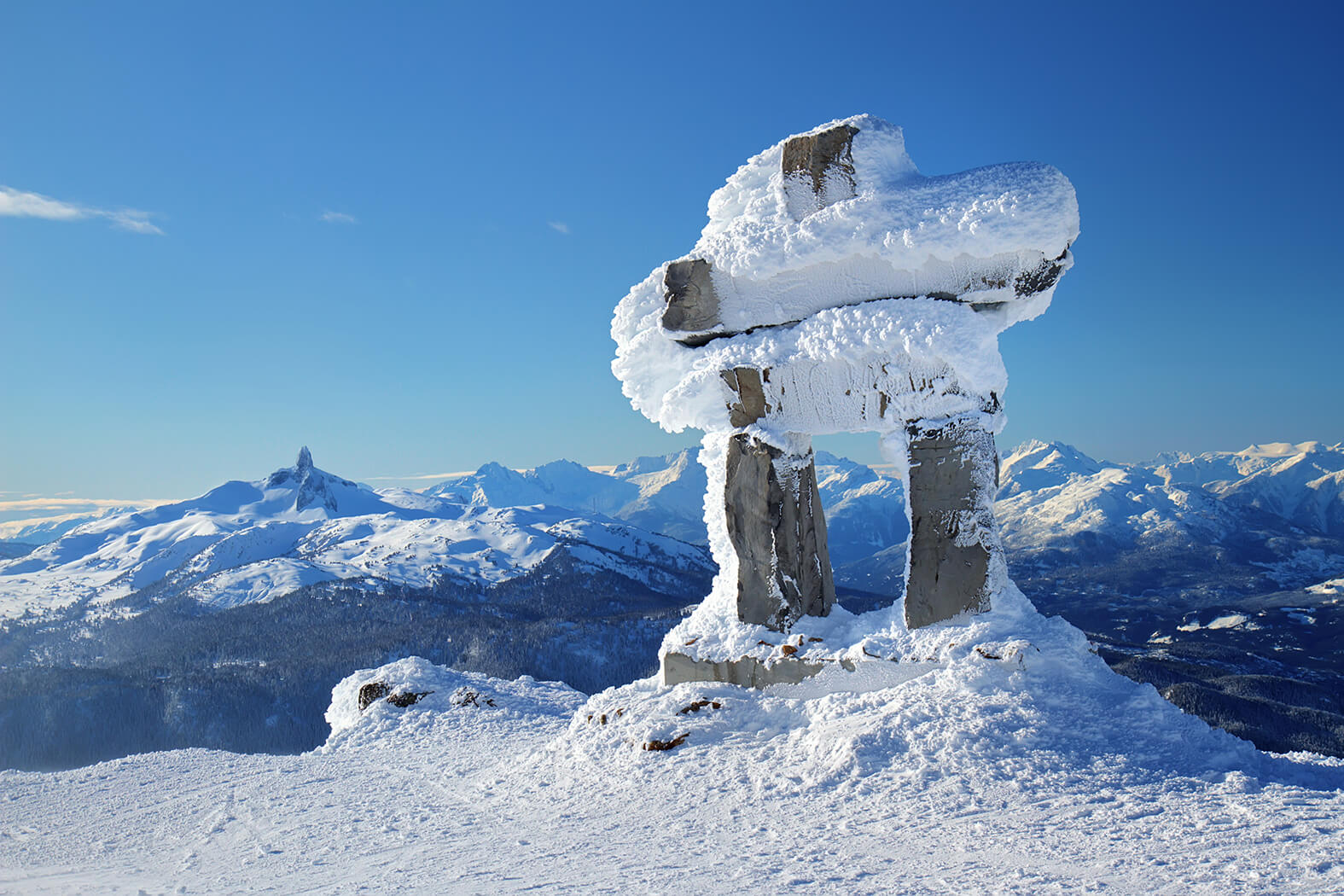
A view of Whistler Summit and Inukshuk on a sunny winter day in British Columbia.
Located on Vancouver Island, Victoria has a more laid-back atmosphere with beautiful gardens, including the famous Butchart Gardens. The city’s harbor is an excellent spot for whale watching, and its British colonial architecture gives it a distinctive charm.
Calgary, famous for its cowboy culture, is the starting point for many Rocky Mountain adventures. In July, the Calgary Stampede draws visitors from around the world for its rodeo events, parades, and concerts.
Edmonton, Alberta’s capital, is known for its extensive river valley park system and as a gateway to Jasper National Park. It hosts a range of cultural festivals, including the Edmonton Folk Music Festival.
Toronto, Canada’s largest city is a cultural melting pot with a thriving theater district, diverse culinary scene, and famous landmarks like the CN Tower. Toronto is also close to Niagara Falls, making it a convenient base for day trips.
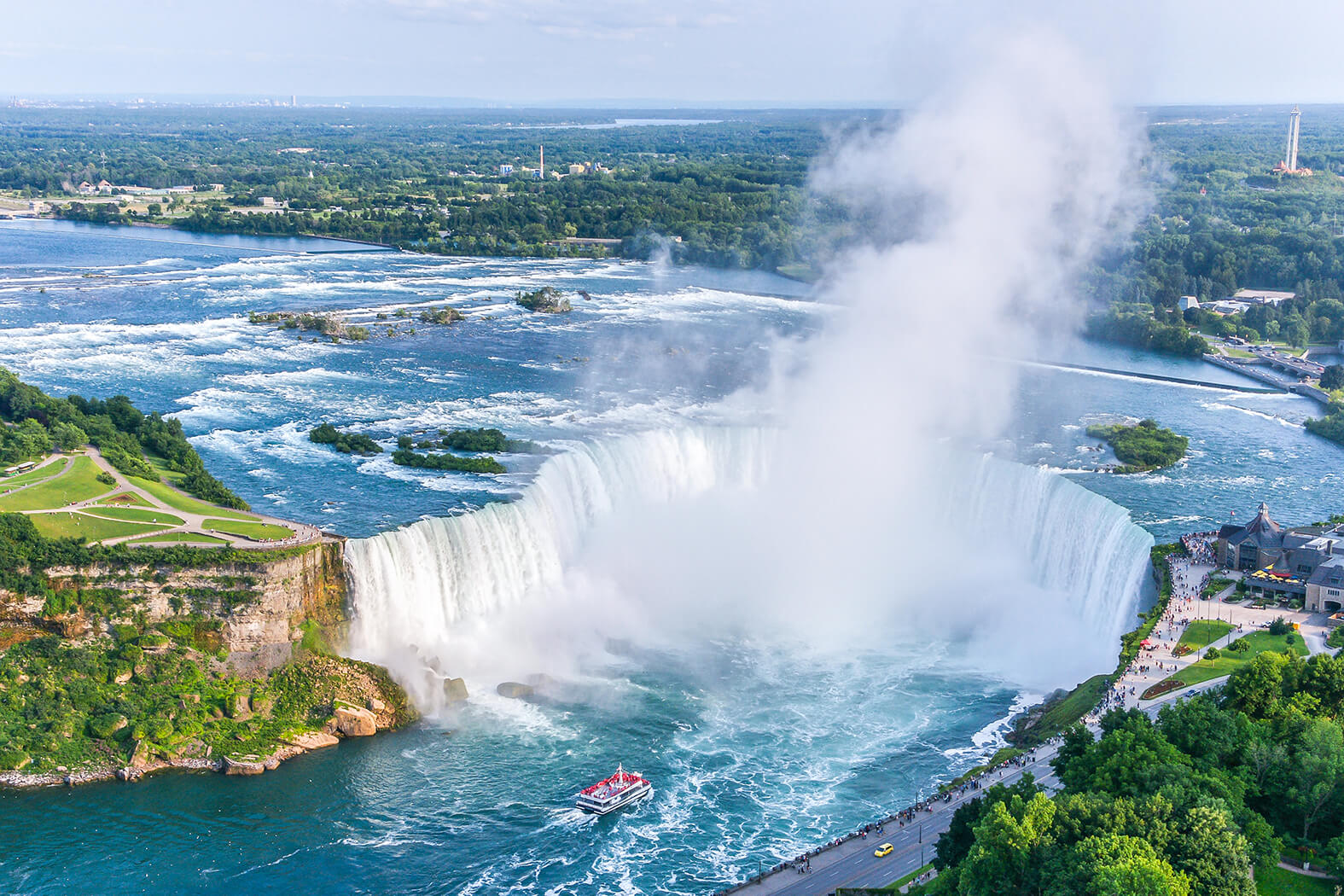
Niagara Falls in Ontario.
Montreal blends old-world European charm with modern city life. Old Montreal’s cobblestone streets, historic buildings, and the impressive Notre-Dame Basilica are highlights, while the Plateau neighborhood is known for its street art and trendy cafes.
Québec City is steeped in history, with its fortified walls and Château Frontenac dominating the skyline. It’s the only North American city north of Mexico with preserved city walls and is a UNESCO World Heritage site.
Nova Scotia’s capital, Halifax, has a strong maritime history. Its waterfront is home to shops, restaurants, and historic landmarks like the Canadian Museum of Immigration at Pier 21.
Natural Landmarks & National Parks
Canada is home to some of the world’s most iconic natural landmarks. Niagara Falls is perhaps the most famous, with its thundering waters drawing millions of visitors each year. In the west, Banff National Park and Jasper National Park offer stunning vistas of the Rocky Mountains, glaciers, and turquoise lakes.
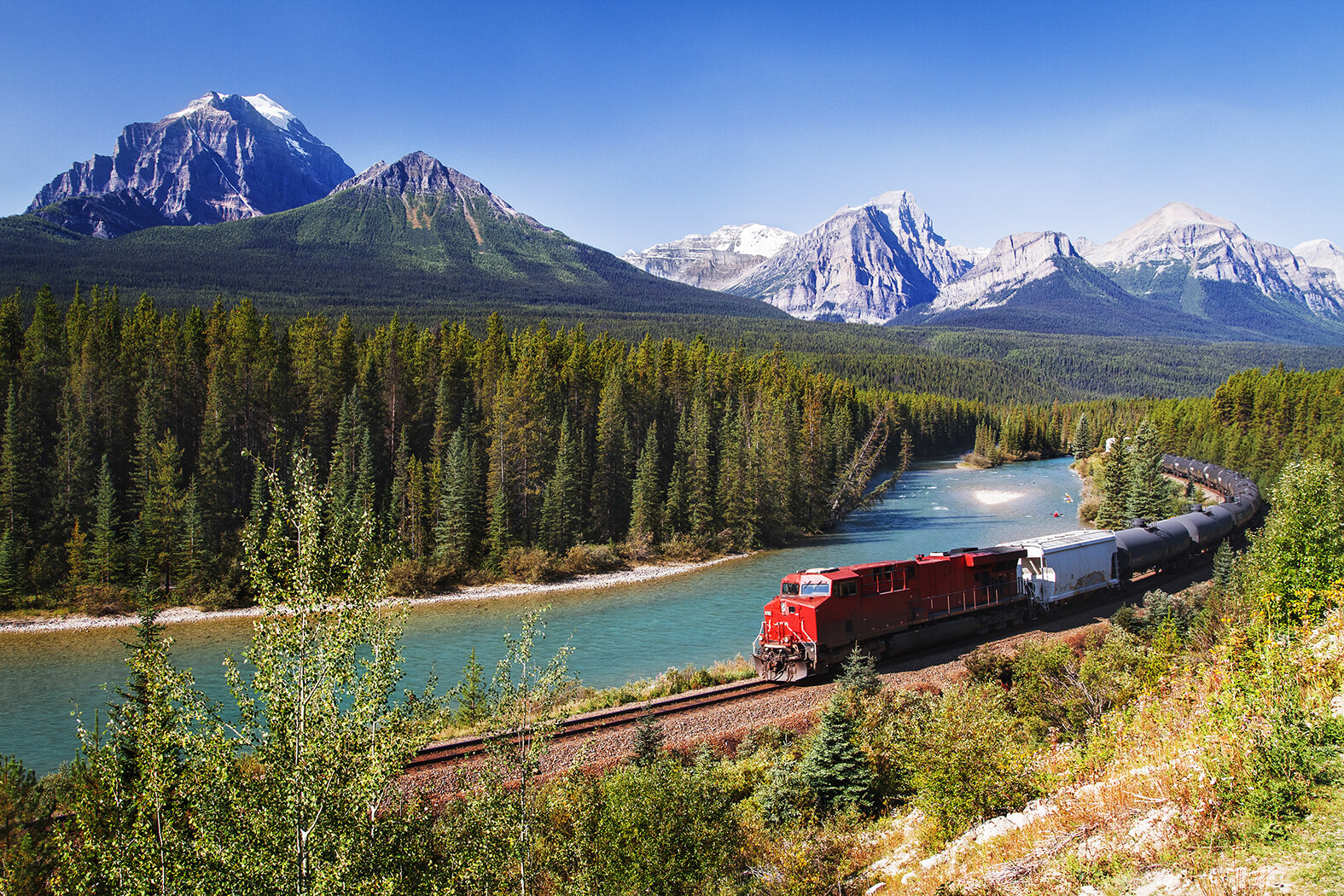
A train passing through Bow Balley with the Rocky Mountains in the background, Alberta.
Gros Morne National Park in Newfoundland provides an otherworldly landscape of fjords and ancient mountains. Prince Edward Island National Park is known for its rolling sand dunes, red sandstone cliffs, and connection to "Anne of Green Gables." On the west coast, Pacific Rim National Park on Vancouver Island is a haven for surfers and hikers alike.
Outdoor Activities
Canada is an outdoor enthusiast’s dream. In the summer, hiking and biking are popular activities in many regions. Banff, Jasper, and the Okanagan Valley in BC have well-maintained trails suitable for all skill levels. For winter sports, Whistler, a world-famous ski resort just north of Vancouver, is a must-visit. The Laurentian Mountains in Québec also offer excellent skiing opportunities, as do the Canadian Rockies.
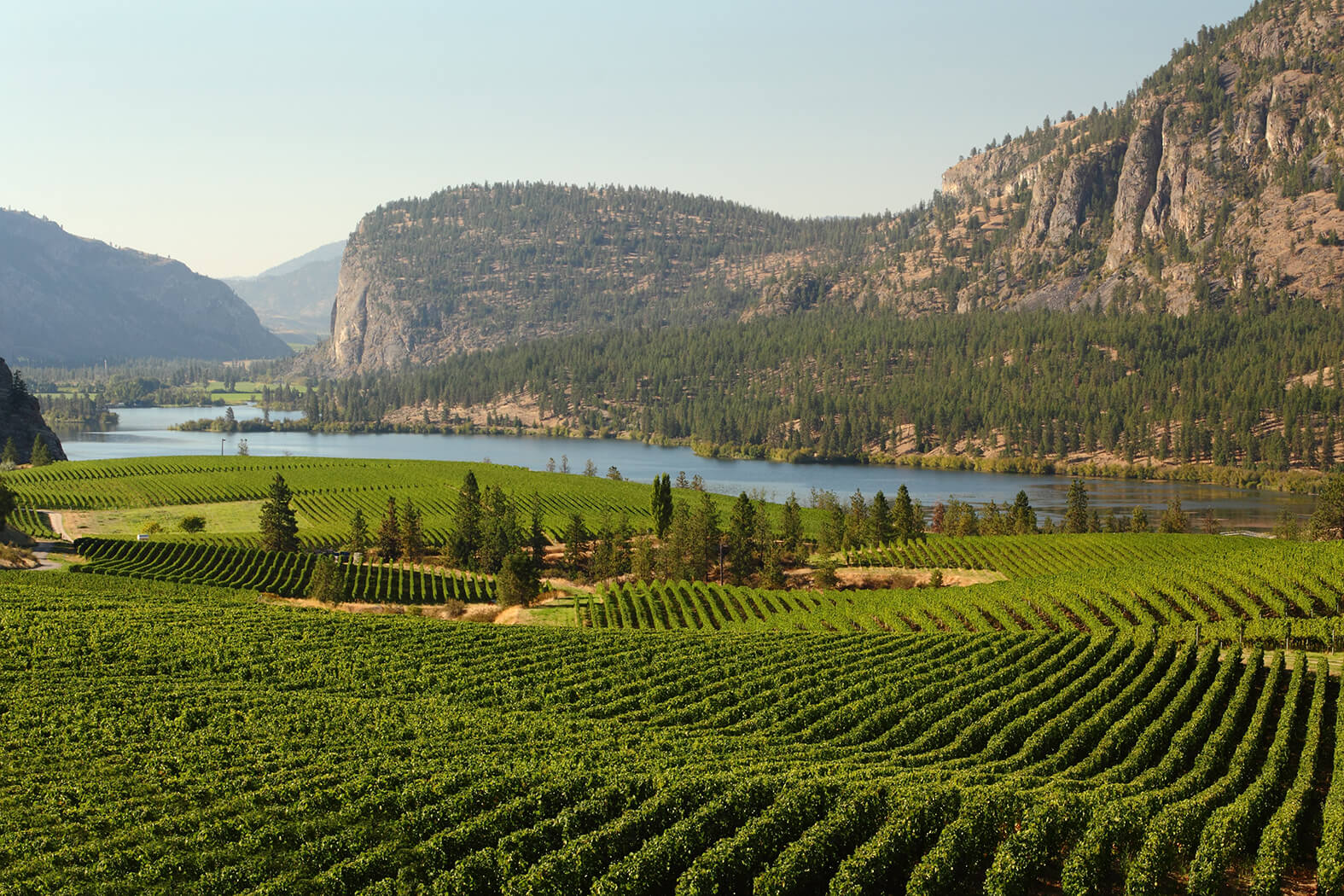
A scenic view of Okanagan Valley and Vineyards on Vaseux Lake in British Columbia.
Canoeing and kayaking are popular in many parts of the country, with Ontario’s Algonquin Park and BC’s Inside Passage providing some of the most scenic paddling routes.
Wildlife
Canada’s diverse wildlife is another major draw for nature lovers. The vast wilderness areas and national parks offer habitats for a wide range of species. In the Canadian Rockies, you may encounter black bears, grizzly bears, elk, and moose, while coastal regions like British Columbia are known for their whale-watching opportunities. Orcas, humpbacks, and gray whales can often be seen in the waters off Vancouver Island, particularly during migration seasons.
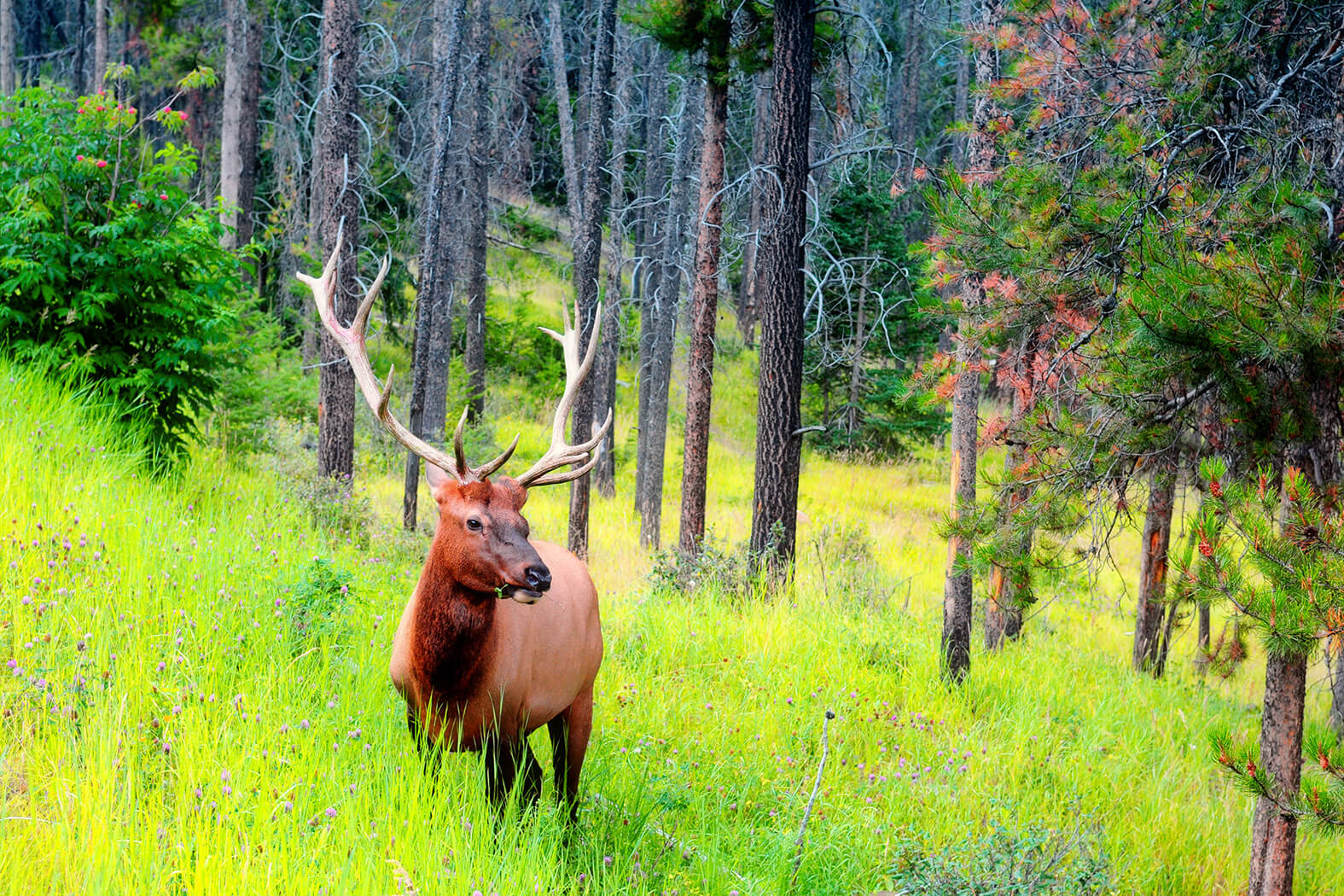
A male elk grazing in Banff National Park, Alberta.
Further inland, wildlife enthusiasts can spot wolves, mountain goats, and caribou in their natural environments. Birdwatchers will appreciate the variety of species, including bald eagles, loons, and puffins along the coasts of Newfoundland and Nova Scotia.
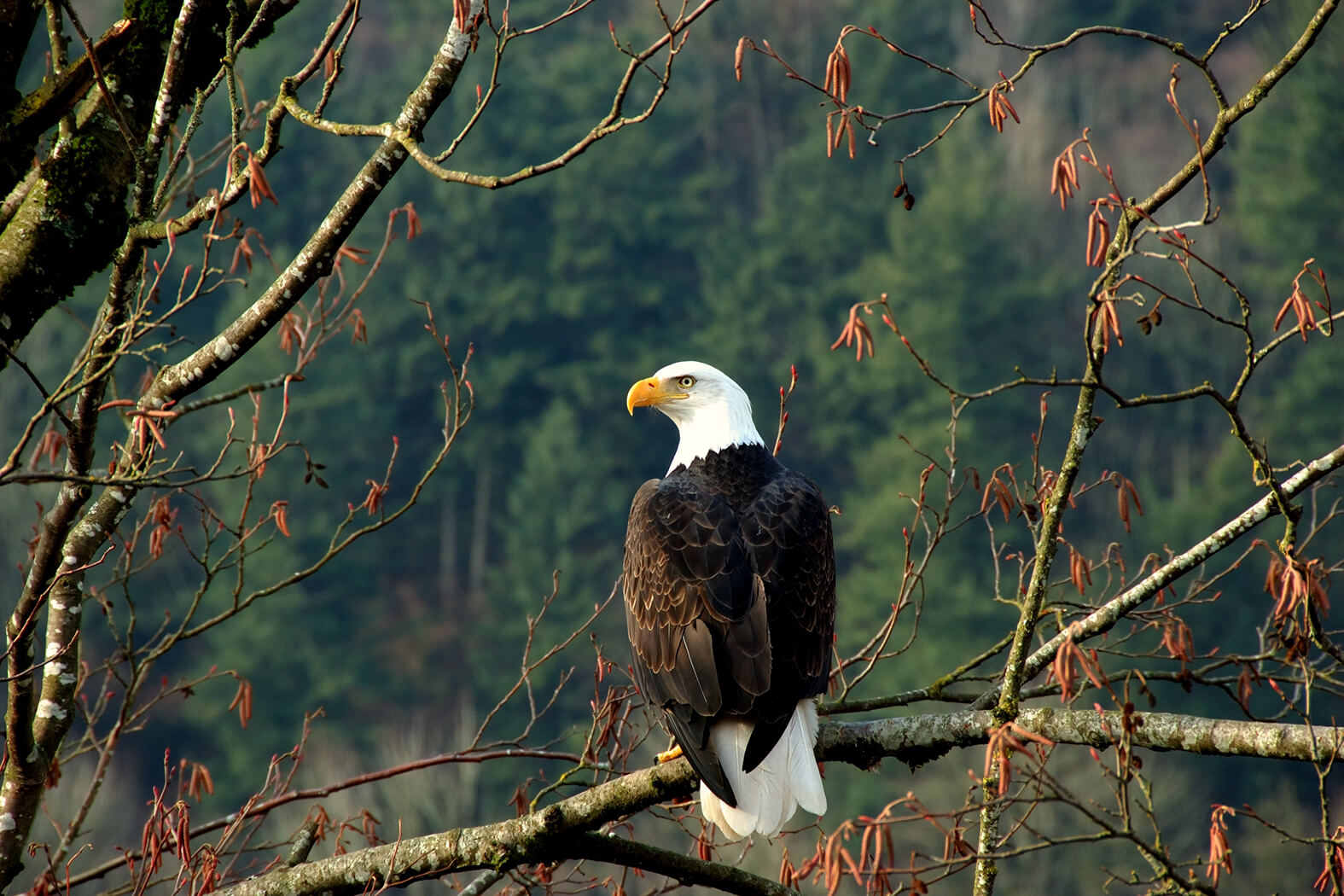
A bald eagle surveying its surroundings in British Columbia.
The Northern Territories provide opportunities to see some of the more elusive Arctic species. Polar bears are a major draw in Churchill, Manitoba, which is often called the "Polar Bear Capital of the World." Visitors to the Yukon or Northern Territories might also spot Arctic foxes, lynxes, and even the rare musk ox.
For marine life lovers, Canada's rivers and lakes are teeming with fish, and fly fishing is a popular activity in regions like Alberta and British Columbia. During salmon runs, especially in places like the Fraser River in BC, you can witness an incredible spectacle of salmon leaping upstream, with grizzly bears often fishing nearby.
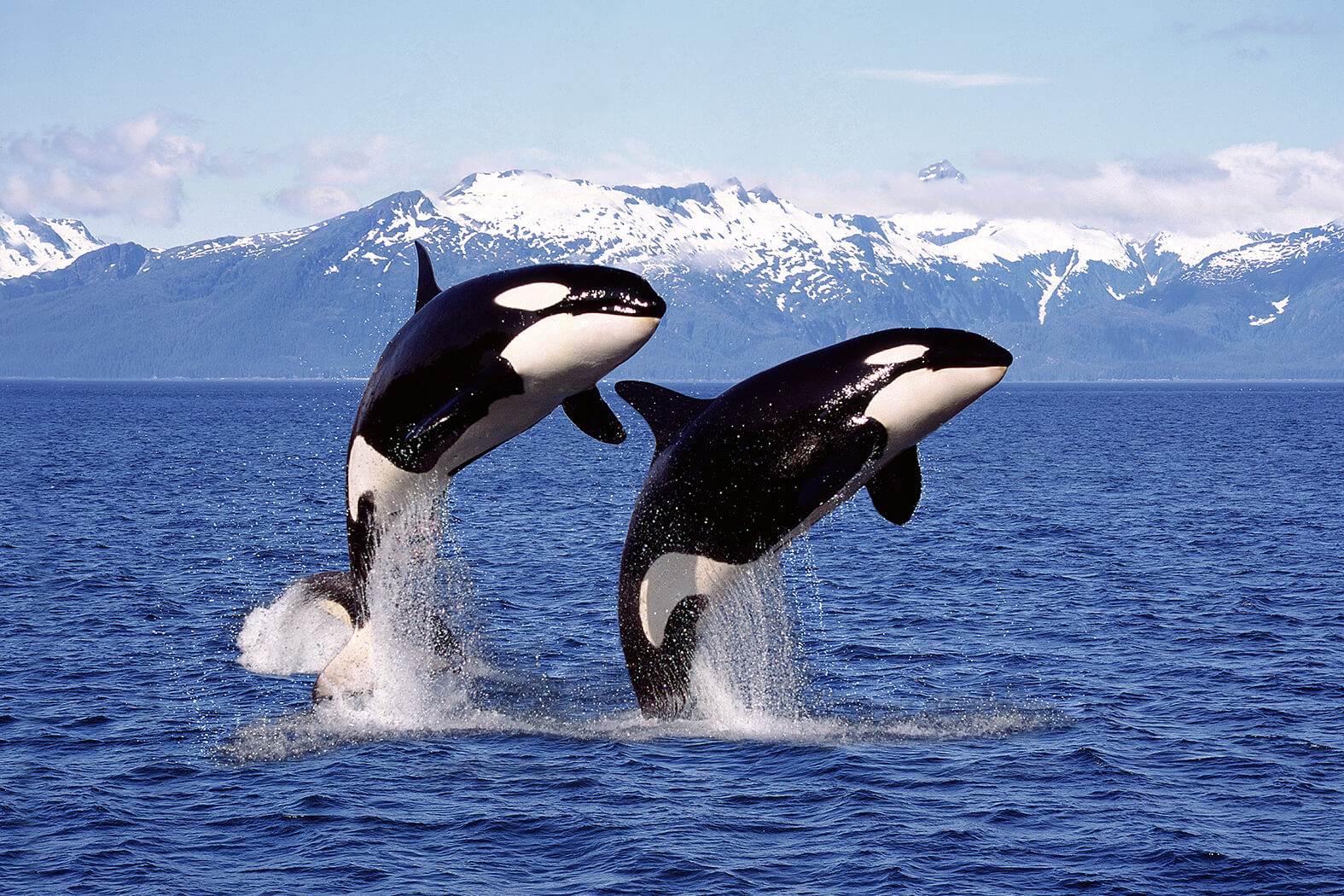
A view of two Orca whales breaching the water.
Hiking, Biking & Skiing
Outdoor activities in Canada offer something for every season and skill level. The country's hiking trails range from gentle walks in urban parks to multi-day backcountry treks. One of the most famous hiking experiences is the West Coast Trail on Vancouver Island, a challenging 75-kilometer trek along rugged coastal cliffs and beaches. For a less intense experience, the Skyline Trail in Cape Breton Highlands National Park provides panoramic views over the Atlantic Ocean and the surrounding highlands.
Mountain biking has grown in popularity across the country, particularly in BC, where the Whistler Mountain Bike Park draws bikers from around the globe. The Okanagan Valley in BC and the Laurentian Mountains in Québec also offer excellent biking trails, often winding through vineyards, lakes, and forested landscapes.
In winter, Canada transforms into a haven for skiing and snowboarding. Whistler Blackcomb, one of the largest ski resorts in North America, is a highlight, offering over 8,000 acres of terrain for winter sports. The Canadian Rockies, with resorts like Lake Louise and Sunshine Village, provide some of the most picturesque skiing conditions in the world. For those looking to explore beyond downhill skiing, cross-country skiing and snowshoeing are popular winter activities, especially in national parks like Gatineau Park in Québec and Kluane National Park in the Yukon.
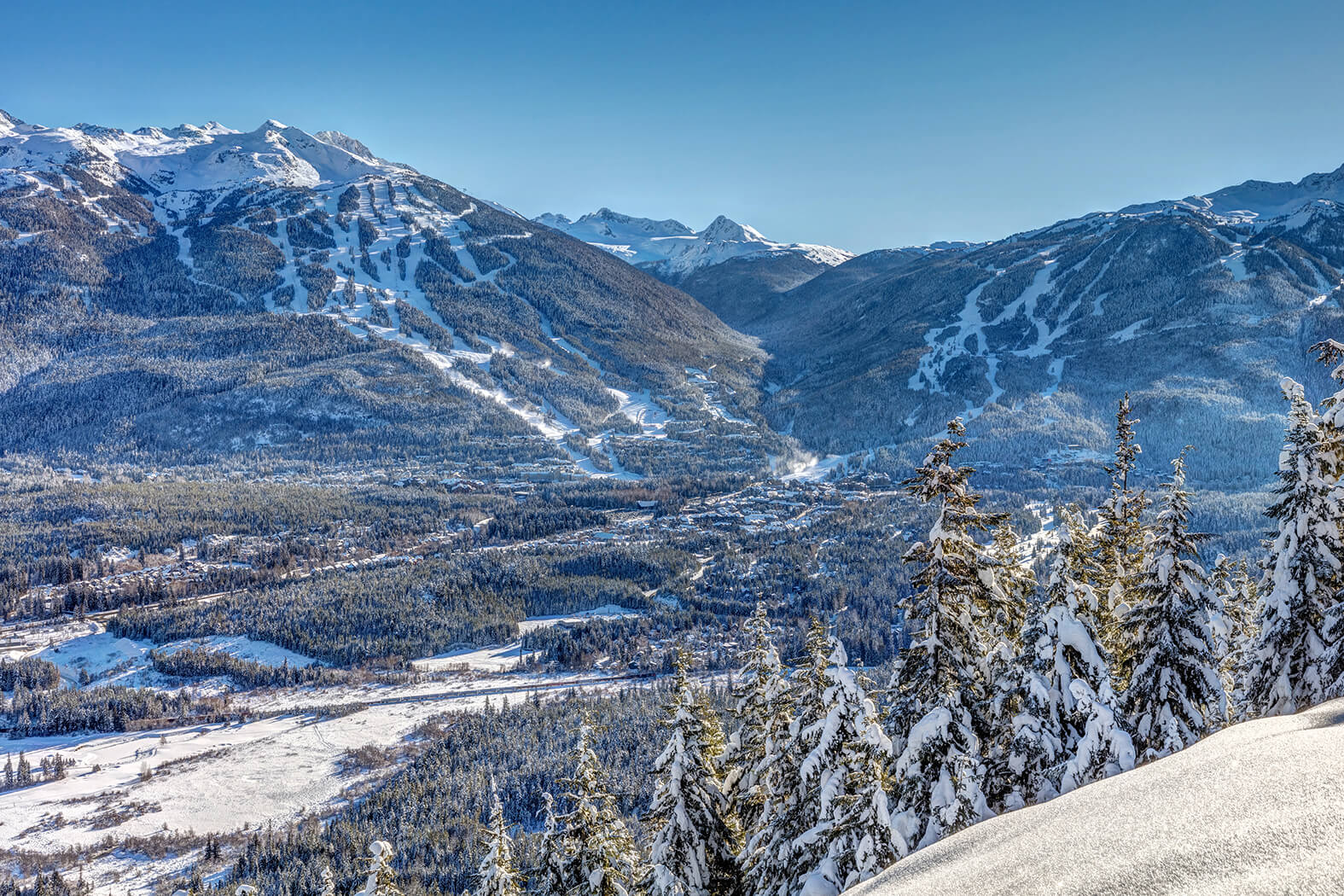
Blackcomb Mountains in Whistler, British Columbia.
For adventurous travelers, heli-skiing in BC is a thrilling way to access remote, untouched snow-covered peaks, while ice climbing in the Rockies offers a unique and exhilarating experience.
Cultural Experiences & Festivals
Beyond its natural beauty, Canada is home to a wide array of cultural events and festivals that give visitors a deeper insight into the country’s identity. One of the most famous is the Montreal Jazz Festival, held annually in late June and early July. The festival brings together some of the world’s most talented musicians and attracts hundreds of thousands of visitors to the streets of Montreal.
Another iconic event is the Calgary Stampede, a 10-day celebration of cowboy culture that takes place every July. Rodeo events, concerts, parades, and a bustling midway create a lively atmosphere where visitors can experience the unique heritage of Western Canada.
In Québec City, Winter Carnival is a highlight of the cold season. Held every February, this event features snow sculptures, ice palaces, parades, and outdoor activities like skating and sledding, all with a backdrop of Québec’s historic streets.
On the other side of the country, Vancouver hosts a variety of festivals, including the Vancouver International Film Festival and the Celebration of Light, a fireworks competition held over the waters of English Bay each summer. In Toronto, Caribana celebrates Caribbean culture with colorful costumes, parades, and street parties that take over the city for a weekend in August.
For a more immersive cultural experience, visitors can explore the rich heritage of Canada’s Indigenous peoples. Many Indigenous communities welcome visitors to learn about their traditions, history, and relationship with the land. In British Columbia, you can visit places like Haida Gwaii, an archipelago home to the Haida Nation, known for its totem poles and culture. In Alberta, Head-Smashed-In Buffalo Jump, a UNESCO World Heritage Site, provides insight into the hunting practices and lives of the Plains Indigenous peoples.
Famous Landmarks
Canada is home to several iconic landmarks that are must-sees for visitors. Niagara Falls, located on the border between Ontario and New York, is one of the most famous natural attractions in the world. The sheer volume of water that crashes down the falls every second is an awe-inspiring sight, and visitors can experience it up close via boat tours or walkways.
In Québec City, Château Frontenac stands as one of the most photographed hotels in the world. Overlooking the St. Lawrence River, this grand castle-like hotel is a symbol of the city and its history. Québec’s Old Town is a UNESCO World Heritage site, where narrow cobblestone streets lead past centuries-old buildings and offer a glimpse into the country’s colonial past.
Toronto's CN Tower, once the tallest freestanding structure in the world, remains an iconic landmark of the city. Visitors can ascend to the observation deck for stunning views of the city skyline and Lake Ontario. For the daring, the EdgeWalk allows thrill-seekers to walk on the outside edge of the tower, 356 meters above ground.
Another notable destination is Parliament Hill in Ottawa, where Canada’s federal government is seated. The Gothic-style architecture of the buildings is particularly stunning at night, when they’re illuminated. In summer, you can catch the Changing of the Guard ceremony or a light-and-sound show that tells the story of Canada’s history.
Helpful Information
Canada is generally an easy country to navigate, but there are a few tips that can enhance your trip. If you’re planning to visit several national parks, it’s worth purchasing a Discovery Pass, which provides unlimited entry to all of Canada’s national parks and historic sites for a full year.
When it comes to transportation, the major cities have efficient public transit systems, though renting a car is often the best way to explore the more remote regions. Driving in Canada is on the right side of the road, and highways are well-maintained. If visiting in winter, it’s important to be prepared for snow and ice, especially if you plan to drive in mountainous regions.
Canada’s official languages are English and French, and while English is widely spoken throughout the country, some knowledge of French can be helpful in Québec and parts of New Brunswick. Canadians are generally friendly and welcoming, and visitors often find it easy to strike up conversations with locals.
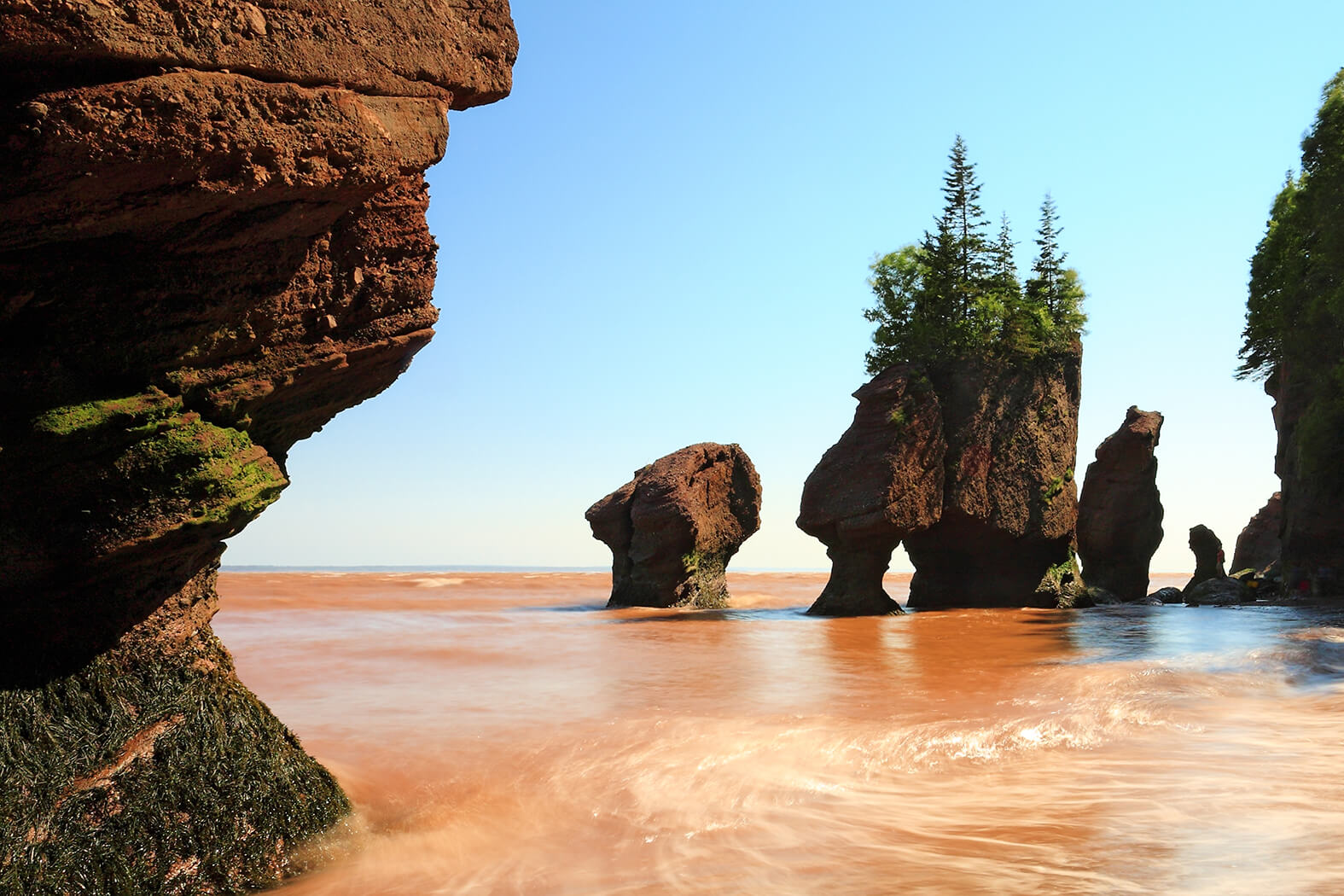
A view of Hopewell Rocks and Bay of Fundy in New Brunswick.
In terms of currency, it’s a good idea to have a mix of credit cards and cash. Many businesses in smaller towns or rural areas may not accept cards, so having cash on hand is useful. ATMs are readily available, and most accept international bank cards.
Finally, Canada’s tap water is safe to drink in all cities and towns, so there’s no need to purchase bottled water.
Conclusion
Canada is a country of immense beauty and diversity, offering something for every type of traveler. Whether you’re drawn to the cosmopolitan cities, historic landmarks, or the rugged wilderness, each region has its own unique charm and appeal. From skiing in the Rockies to exploring the cobblestone streets of Québec City, Canada is a destination where unforgettable experiences await at every turn. The natural wonders, culture, and welcoming people make it a destination worth exploring, no matter the season.
Alberta
Province
British Columbia
Province
Manitoba
Province
New Brunswick
Province
Newfoundland & Labrador
Province
Northwest Territories
Province
Nova Scotia
Province
Ontario
Province
Prince Edward Island
Province
Québec
Province
Saskatchewan
Province
Yukon
Province

